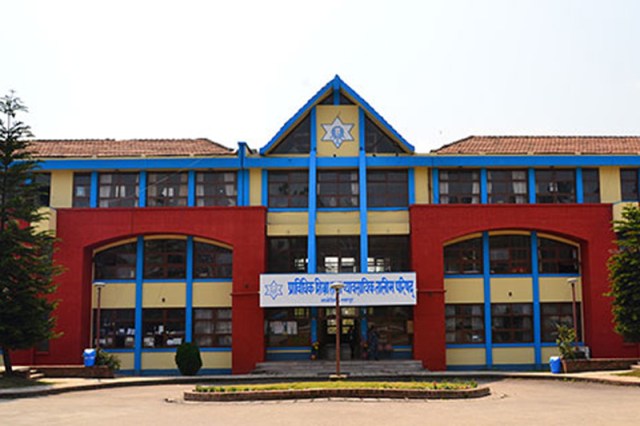Published by: BhumiRaj Timalsina
Published date: 30 Jan 2022

Education is the basic component of a human life. It is the process of importing knowledge, skills, and judgment. Besides education, people engage in various kinds of training as well. Both of these aspects help to get the employment opportunities in a human life. Overall, it helps to uplift the living standard of a human being.
Employment is the work or occupation for which we get paid. Employees are paid according to their employment level.
Regional Level Employment: The employment opportunities which are connected to a region of a nation according to the geographical feature are known as regional level employment opportunities. It might differ from region to region in a nation. Industries and factories of the different regions vary from each other. For example, tea is popular in Eastern region. We can generate better opportunities by growing tea there but apple, herbs and walnuts are grown mostly in the Western hilly region.
National Level Employment: A large section of people (i.e. 66%) are engaged in the agriculture sector for their livelihood in Nepal. Other 22% are engaged in business and trade whereas the remaining 12% are engaged in other sectors such as manufacturing, handicrafts, etc. The gazetted civil service posts are advertised from central office of PSC. The posts of UN agencies and NGOs are advertised at the national level.
Importance of Regional and National Level Employment

Training is the process of learning skills and behaviors among labor for a certain time. It helps in gaining knowledge in different activities. Training is further divided into two types. They are:
General Training: The basic type of training usually for a short period of time is known as general training. This type of training gives a general idea about the organization, roles, and responsibilities, attitude building, etc. General training is given by the NGOs, INGOs, and social organizations. General training might be awareness programs, sensations, orientations, etc.
Vocational Training: The training which is done in order to develop the professional skills is known as vocational training. It is longer in time in comparison to the general training. This type of training is related to the development of technical skills like software, hydropower, mechanism, driving, plumbing, etc. This type of training helps to create job opportunities.
Relationship between Vocational Training and Technical Education
Both vocational training and technical education are inter-related to each other but are slightly different. Vocational training is for those people who are uneducated. It is a short-term technical training. Both governmental and non-governmental organizations provide such training.
Technical education is the program for students. It is generally for a longer period. Council for Technical Education and Vocational Training (CTEVT) is the recognized organization in Nepal to provide technical education and runs various courses at diploma level or proficiency certificate. So, technical education is a kind of long-term academic course of the vocational training program.
Importance of Vocational Training and Technical Education

Council for Technical Education and Vocational Training (CTEVT), established in 1989 AD (2045 BS), is a national autonomous apex body for Technical Education and Vocational Training (TEVT). It is located at Sanothimi, Bhaktapur. Its main objective is to produce the basic and middle level of vocational and technical human resources required for the national development. It also develops a competent workforce for national and international market needs.
The council is chaired by the Ministry of Education. It consists of 24 members and a governing board, known as council, comprises of nine members. The main vision of CTEVT is to develop the skilled human resources for the national prosperity. There are all total 418 technical schools in Nepal. It provides Technical School Leaving Certificate (TSLC) and proficiency Diploma Level programs. There are two types of programs conducted under CTEVT. They are as follows:
Vocational Training: CTEVT provides professional and vocational training to school drop-outs and the people who are either unable to gain a higher education or are interested to gain certain professional skills for their better professional careers. These types of training are a bit longer in the time frame. It offers the courses on demand and need of the people, like agriculture, engineering, health, tourism, management, etc. Anybody can take part in these training.
Technical Training: Technical training means providing basic technical education programs to students. CTEVT conducts various courses of TSLC and Proficiency level on health, engineering and agriculture trades, etc. But the entry qualification needed for TSLC level is SLC pass for a course of 15 months and under SLC for the course of 29 months. Some examples of TSLC and Diploma Level programs are:-
In TSLC programs there are three areas:
In Diploma Level programs, there are three areas:
TSLC Level Programs: The basic qualification to join this course is SLC pass for 15 to 18 months course and under SLC for 29 months course.
Certificate/Diploma Level Programs: The entry requirement for 3 year Certificate/Diploma level program is at least SLC pass with second division.
Opportunity for Higher Education: Those who have completed the above requirements are only eligible to attend Bachelor Level of studies in related subjects.
Vocational Training Programs under Other Governmental Organizations
The government offers various vocational training concerned with their respective field and technology. Some of the training institutes focusing vocational training programs are as follows:
Directorate of Agricultural Training (DAT): It is located at Harihar Bhawan, Pulchowk. It formulates different training policies under the Department of Agriculture, Ministry of Agricultural Development. The policy made by DAT is implemented through five Regional Agricultural Training Center (RATCs) to conduct training programs all over the country. The Directorate commenced since 1987. The Directorate organizes in-service training for employees, institutional capacity improvement training and different vocational training packages on agriculture.
Vocational and Skill Development Training Center: It is located at Bhaisepati, Lalitpur and it is running under Ministry of Labor and Employment. This especially focuses on women, dalits, disabled persons and victims of conflicts to generate self-skills to them. It provides both short and long-term training according to the requirement of people from local to foreign employment promotions.
Training Institute for Technical Instruction (TITI): It is located at Sanothimi, Bhaktapur as a specialized unit of CTEVT. It provides training adopted by South Asian Nations and many other countries. It was established under Swiss cooperation. It provides quality training in different subjects. Participants from various institutions are getting training from TITI according to their requirements.
Cottage and Small-scale Industry Department (CSID): CSID is running under Ministry of Industry. It is located at Tripureshwor, Kathmandu. It conducts both entrepreneurial and skill development training programs particularly for the potential entrepreneurs of micro enterprises as well as cottage and small scale industries. This program helps to generate self-employment opportunities.
Vocational Training from Different Corporate Organizations: Many corporate organizations have conducted vocational training. Some of the training institutions that focuses on vocational training programs are as follows: